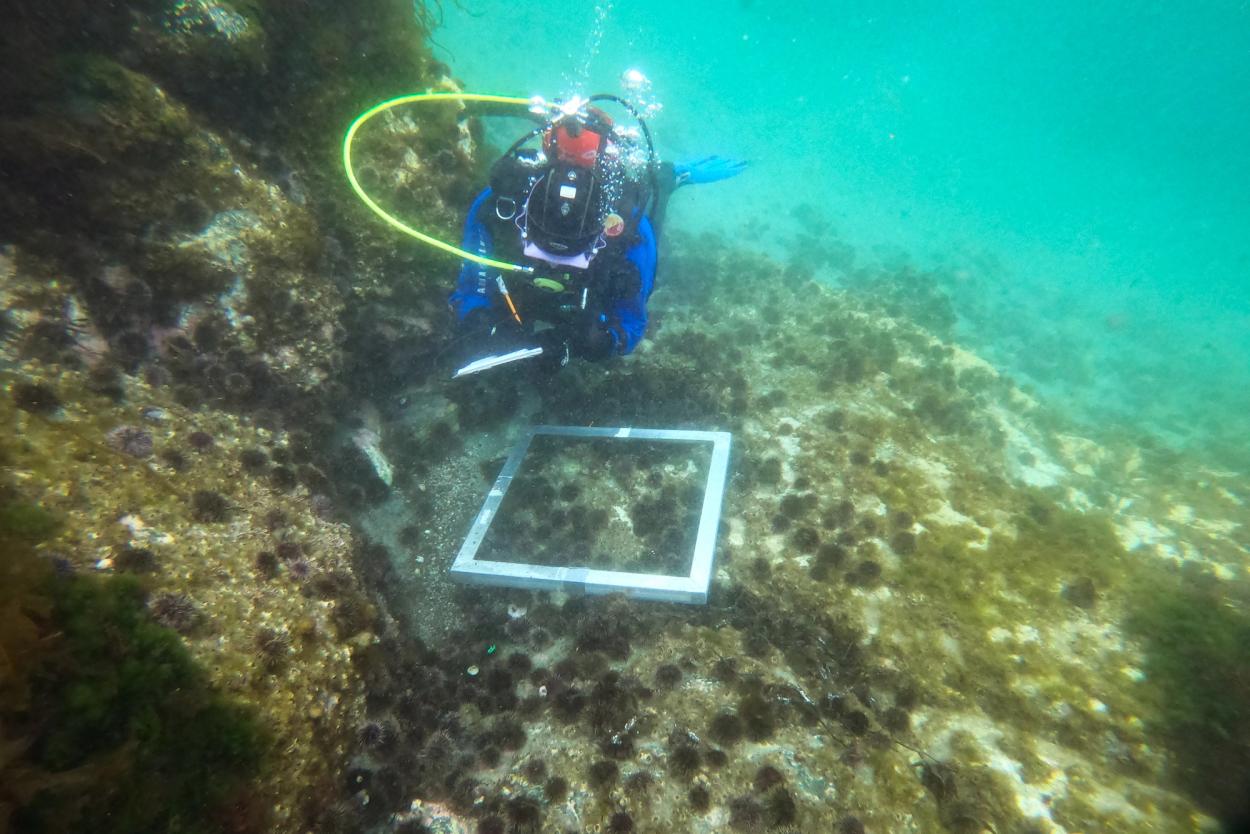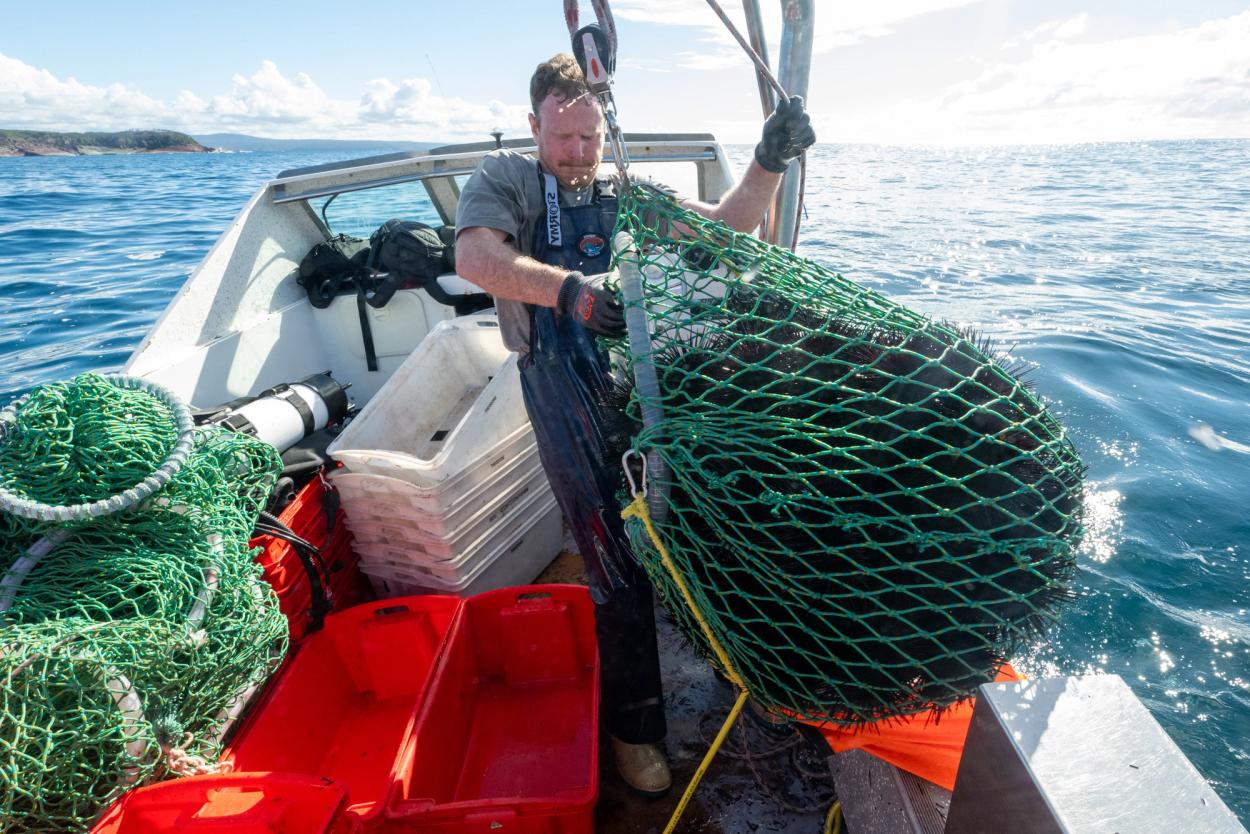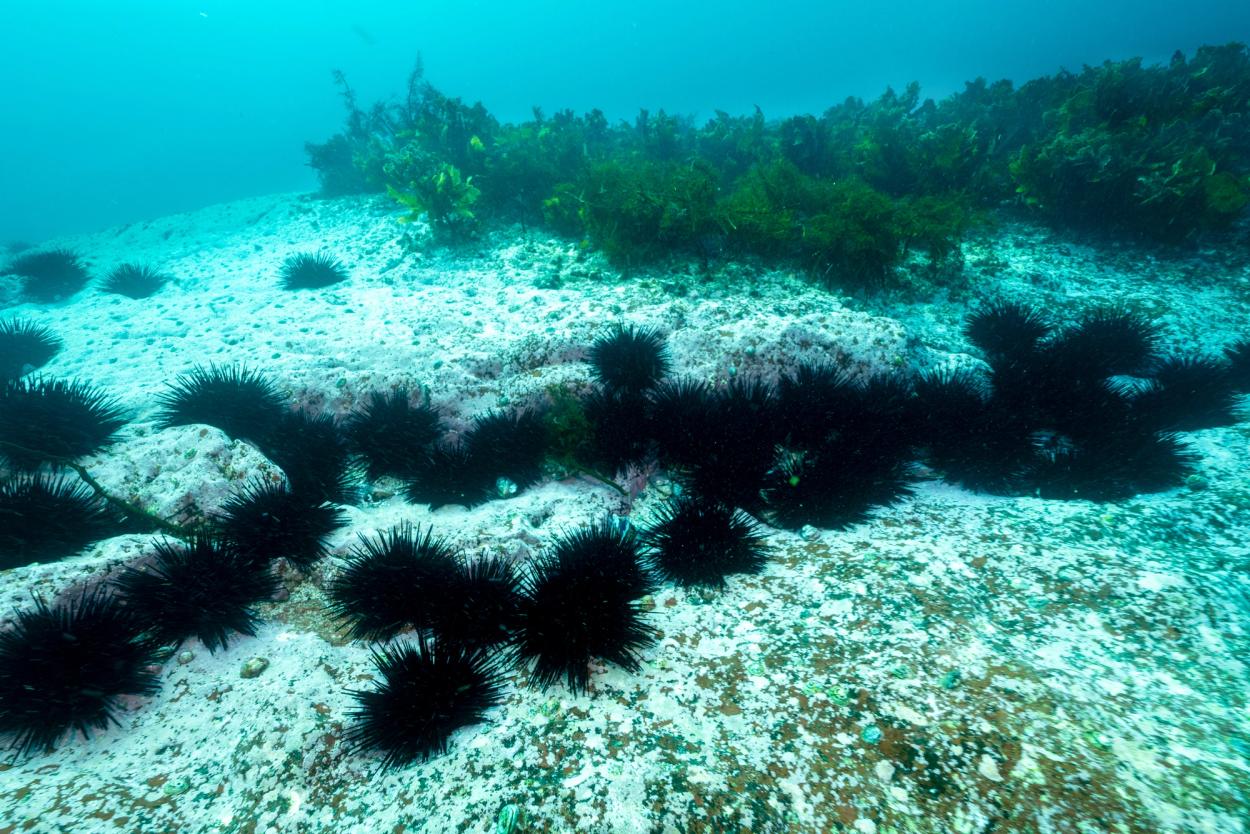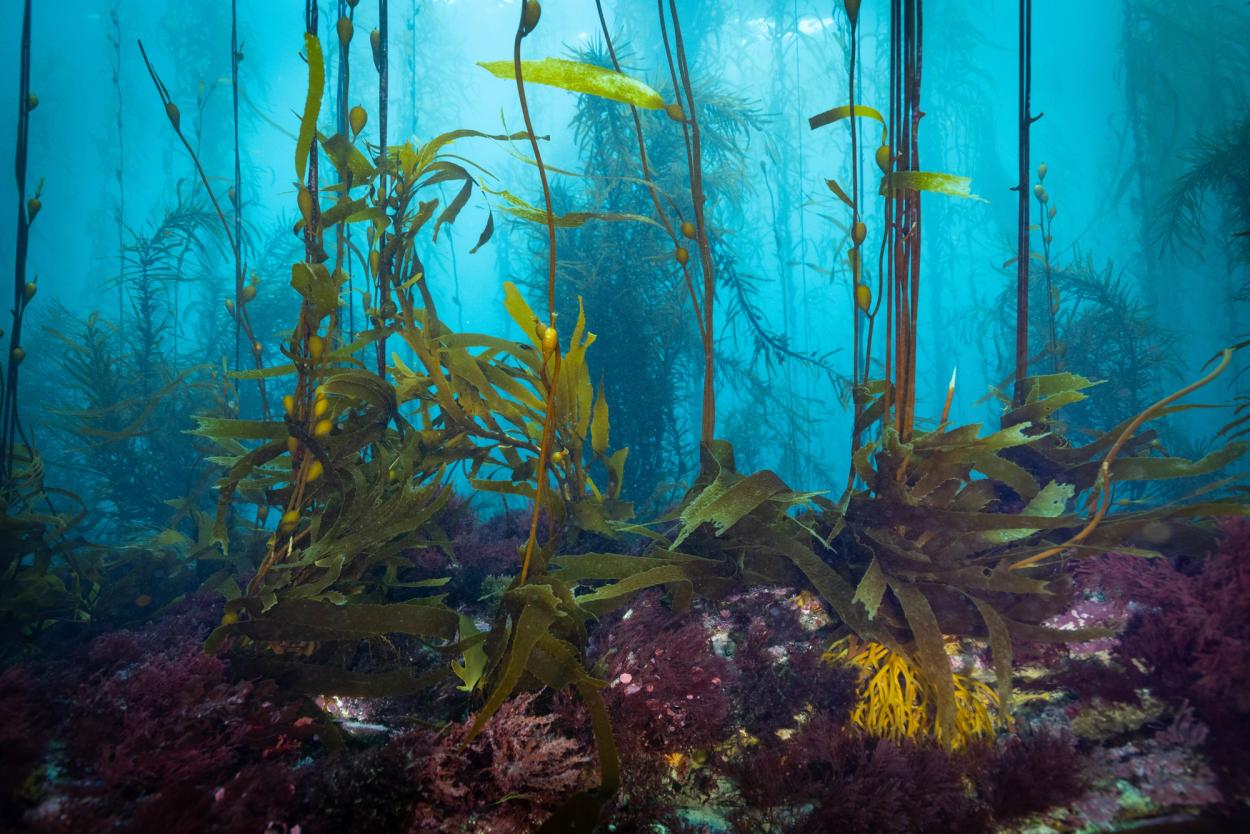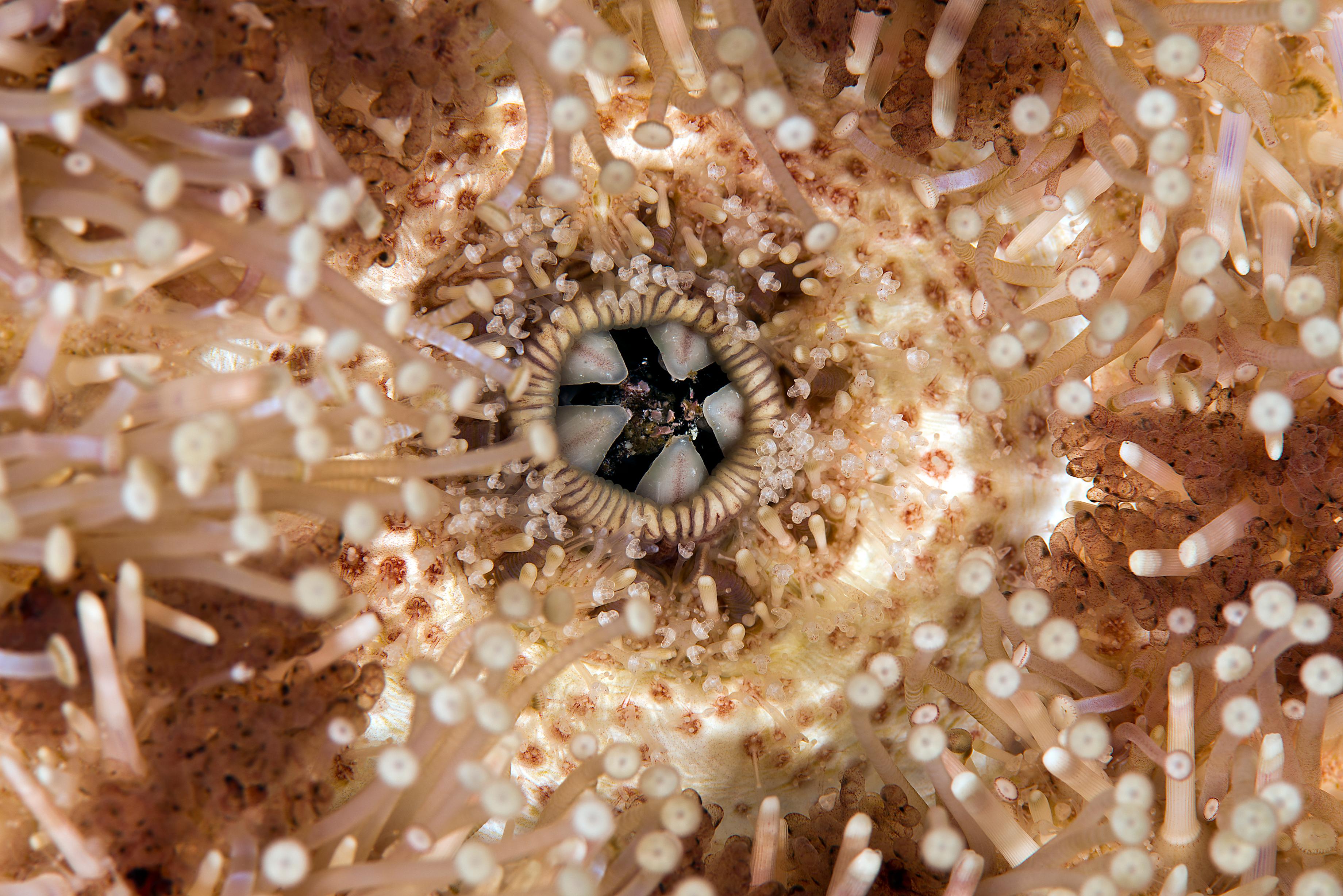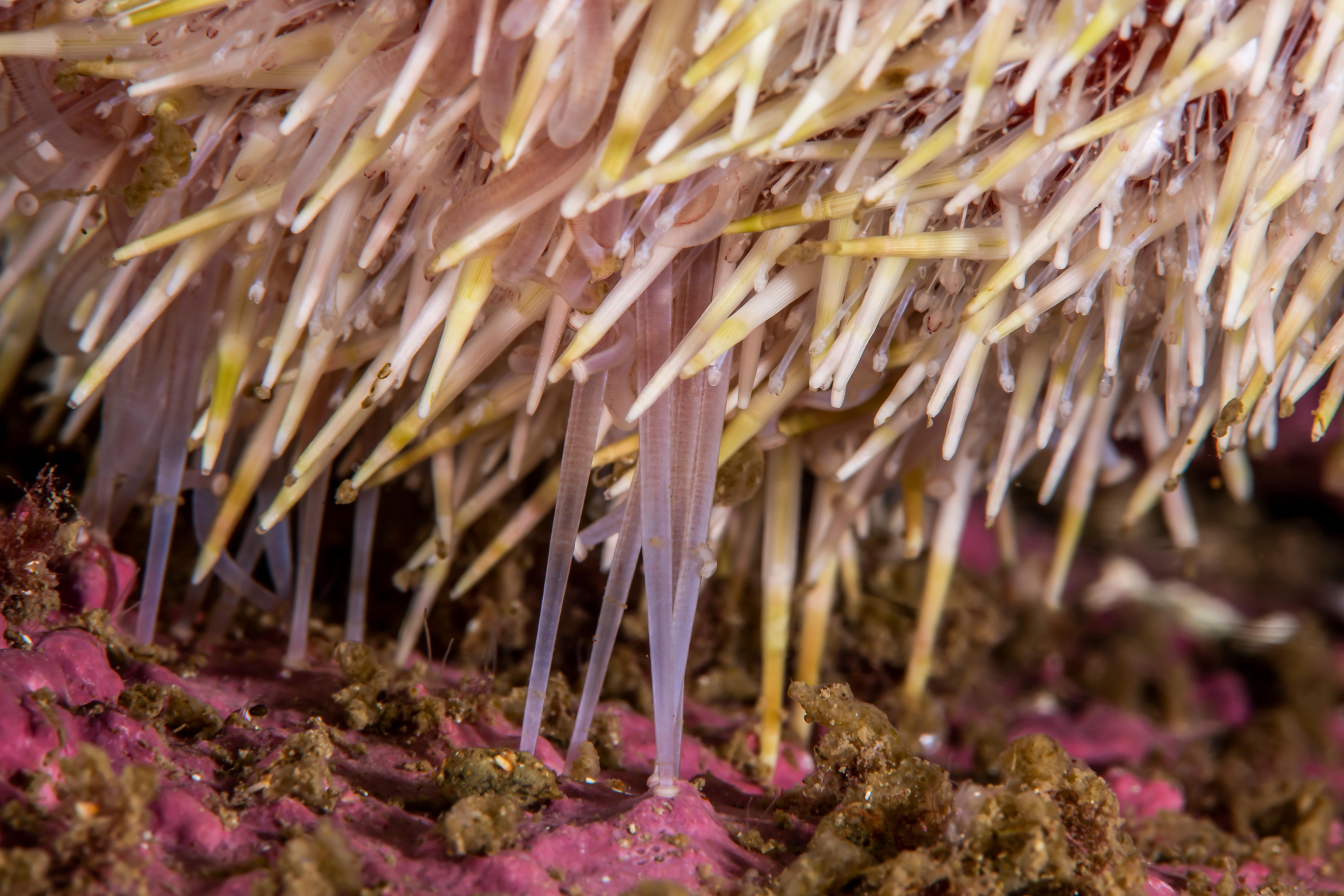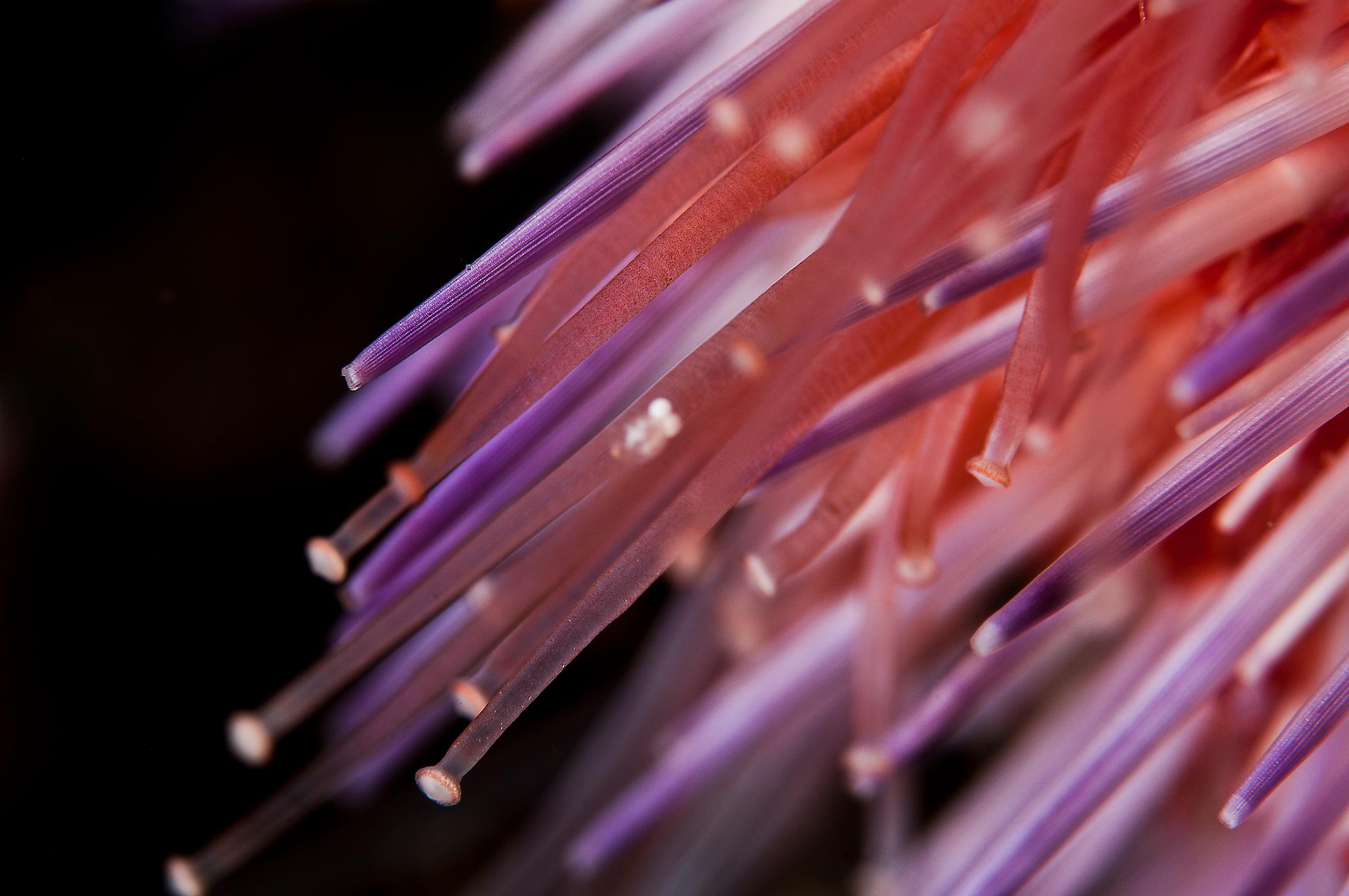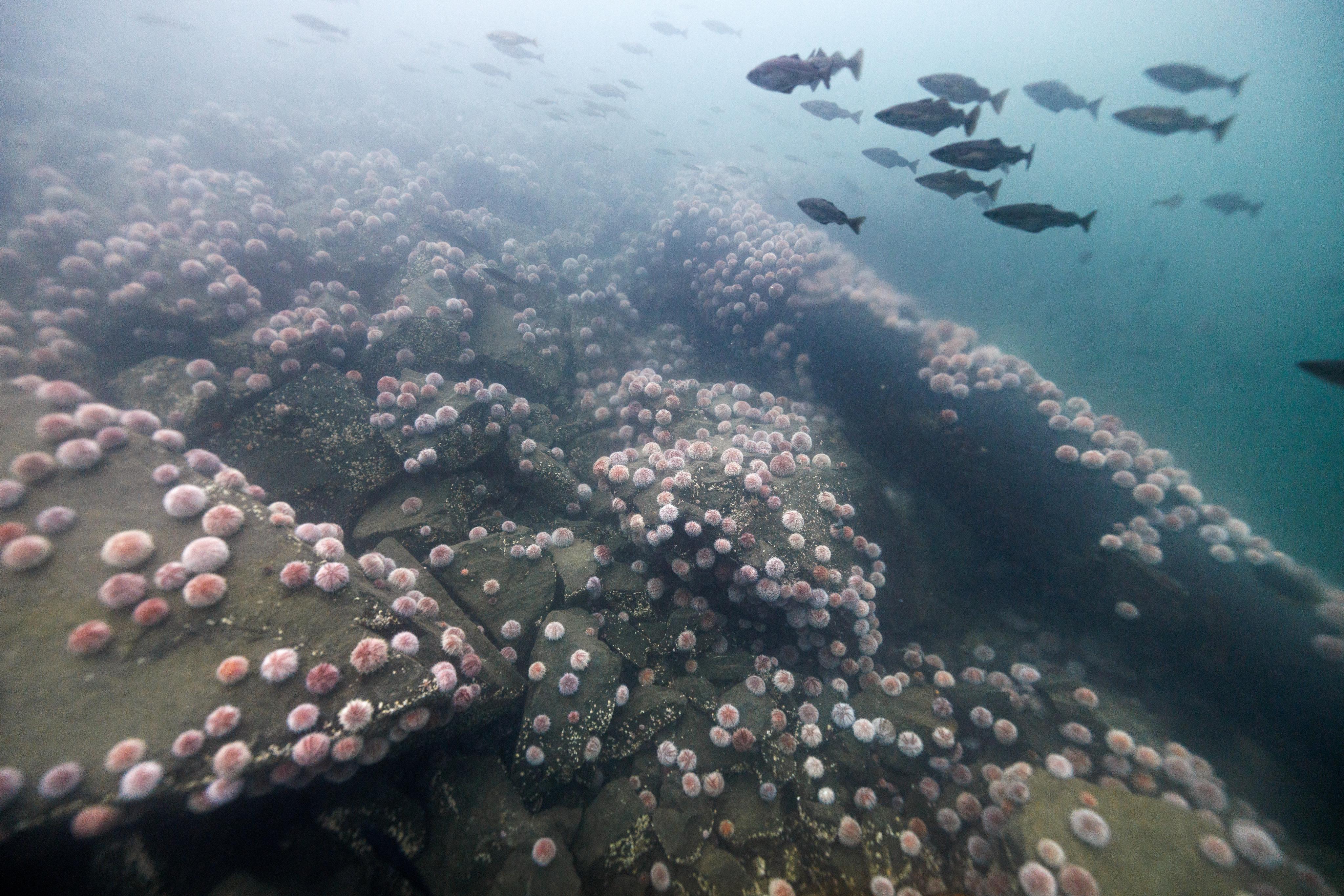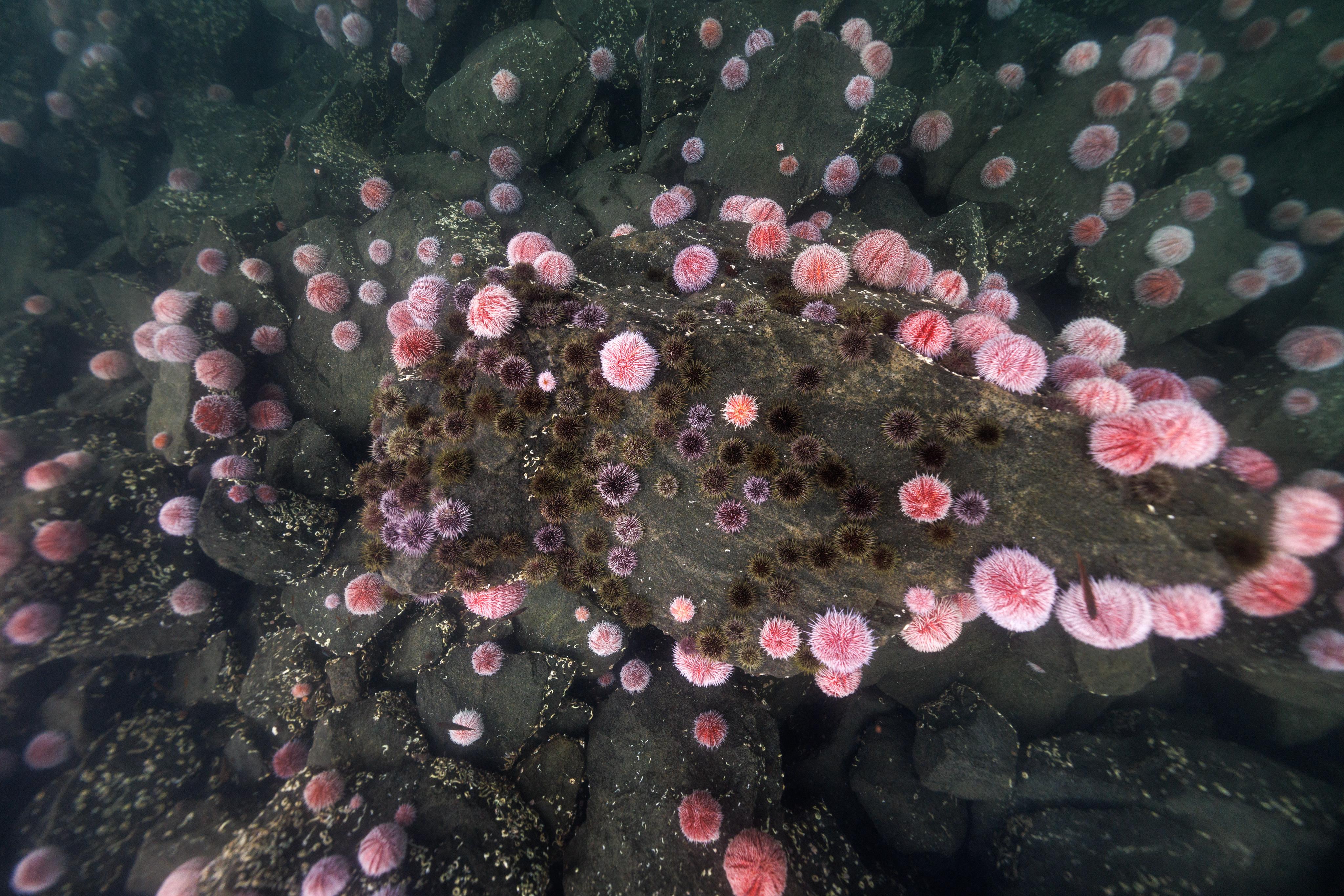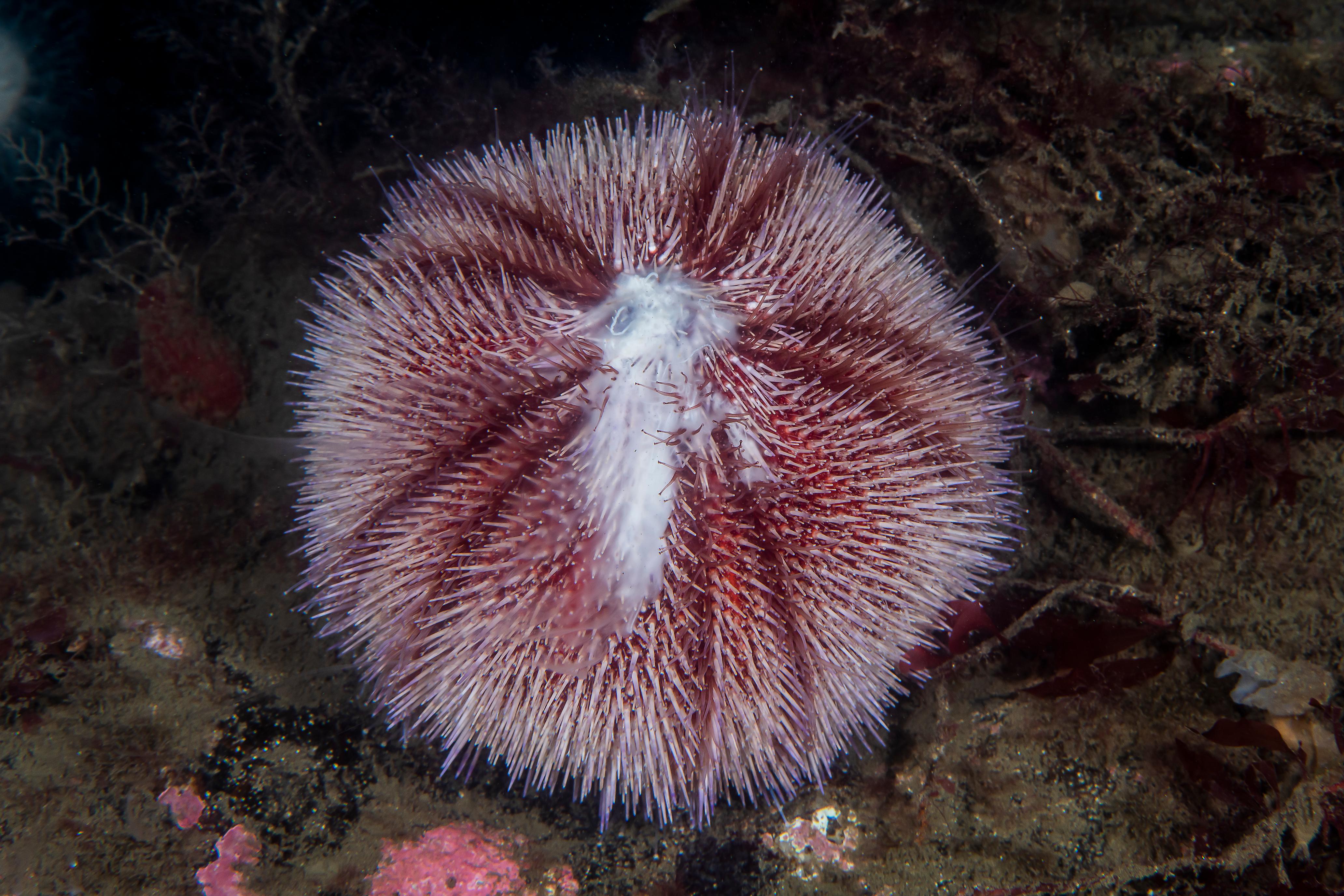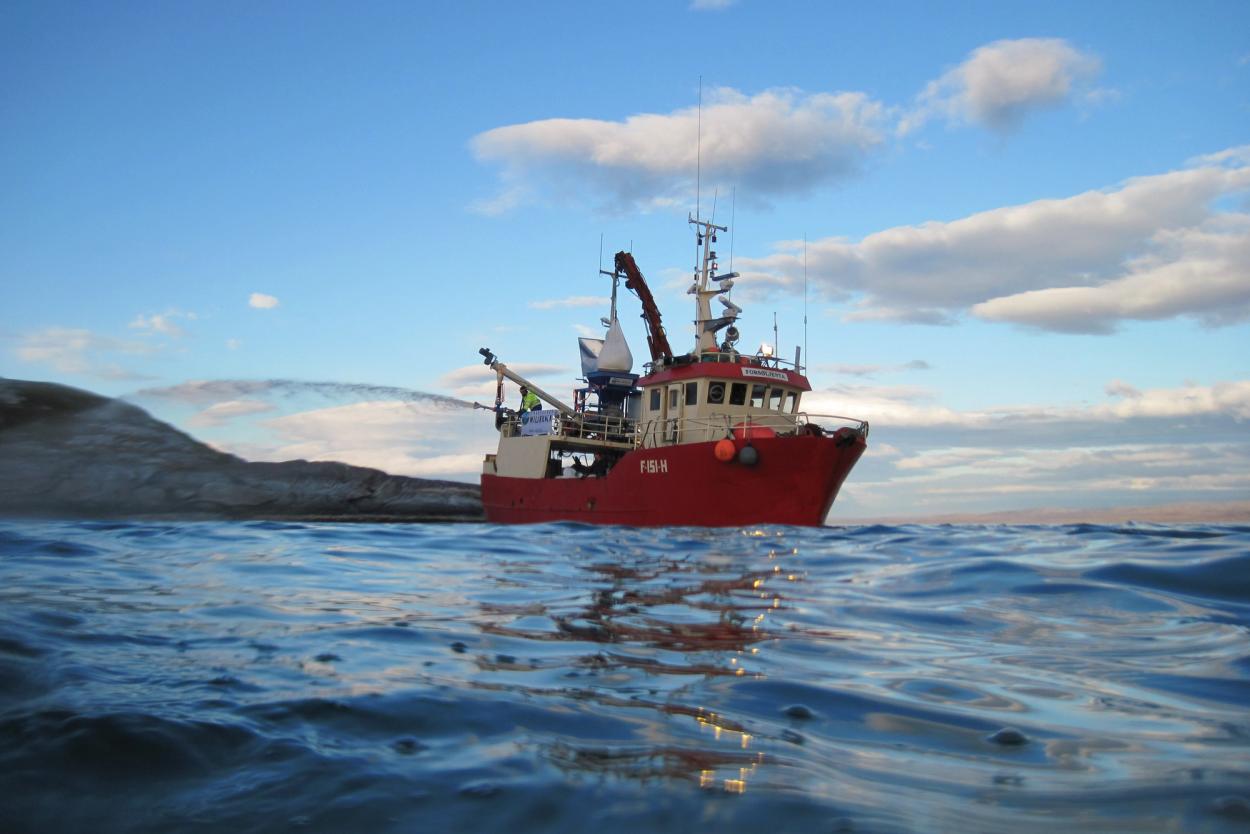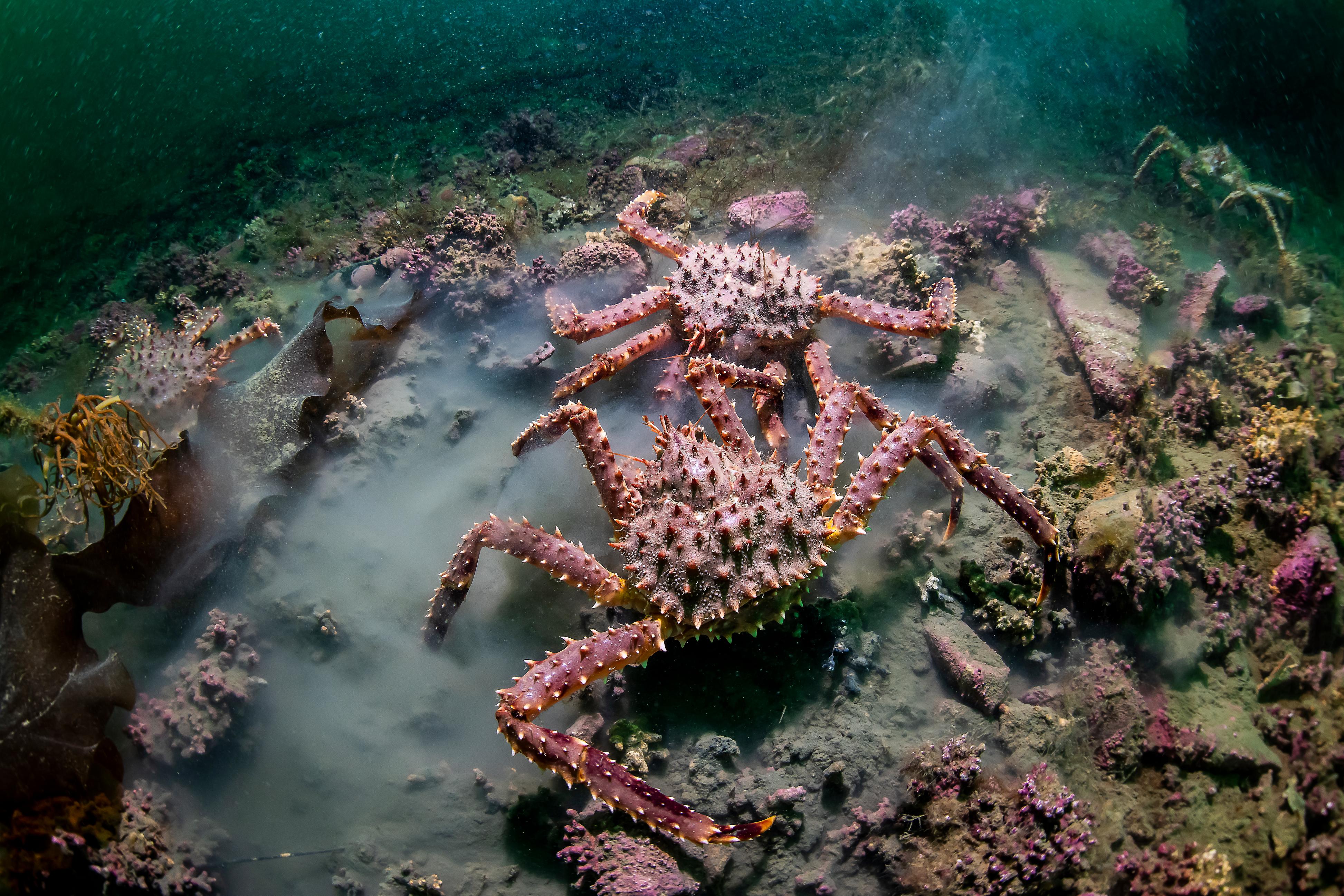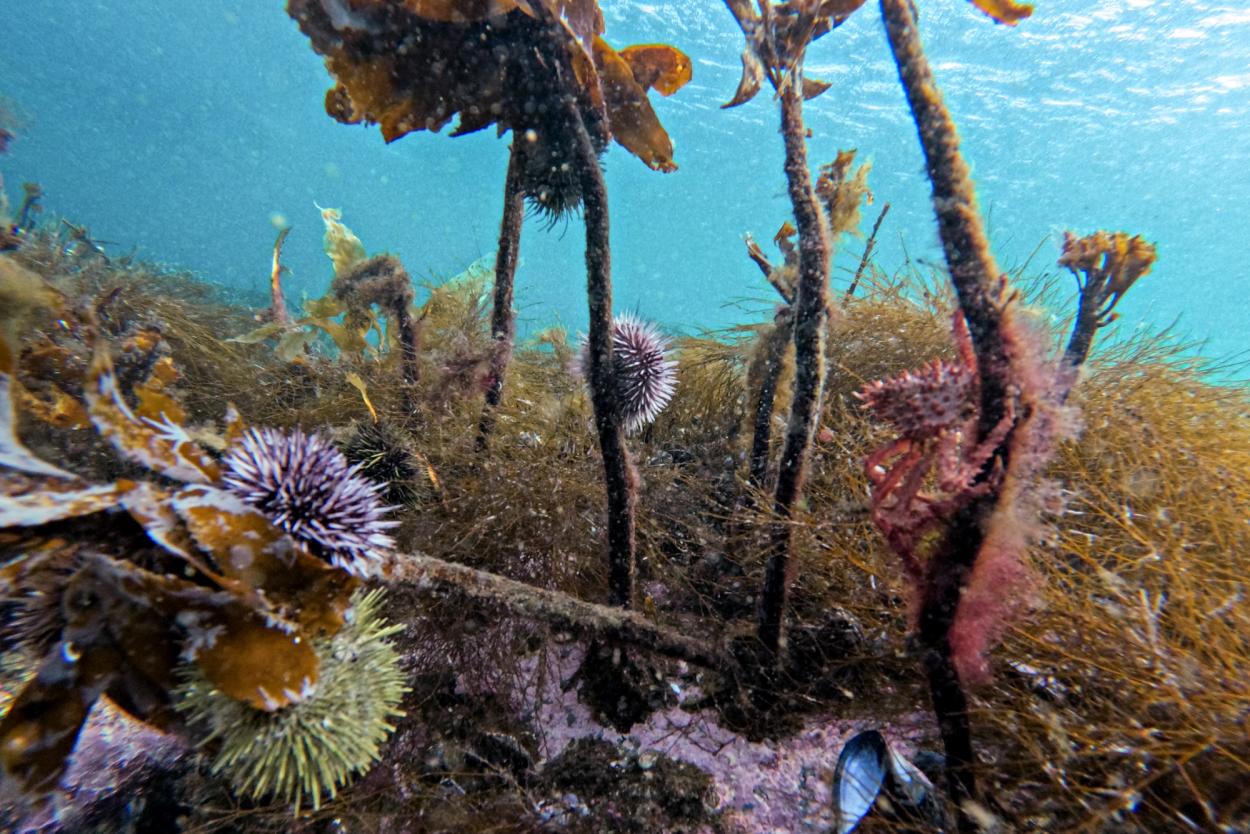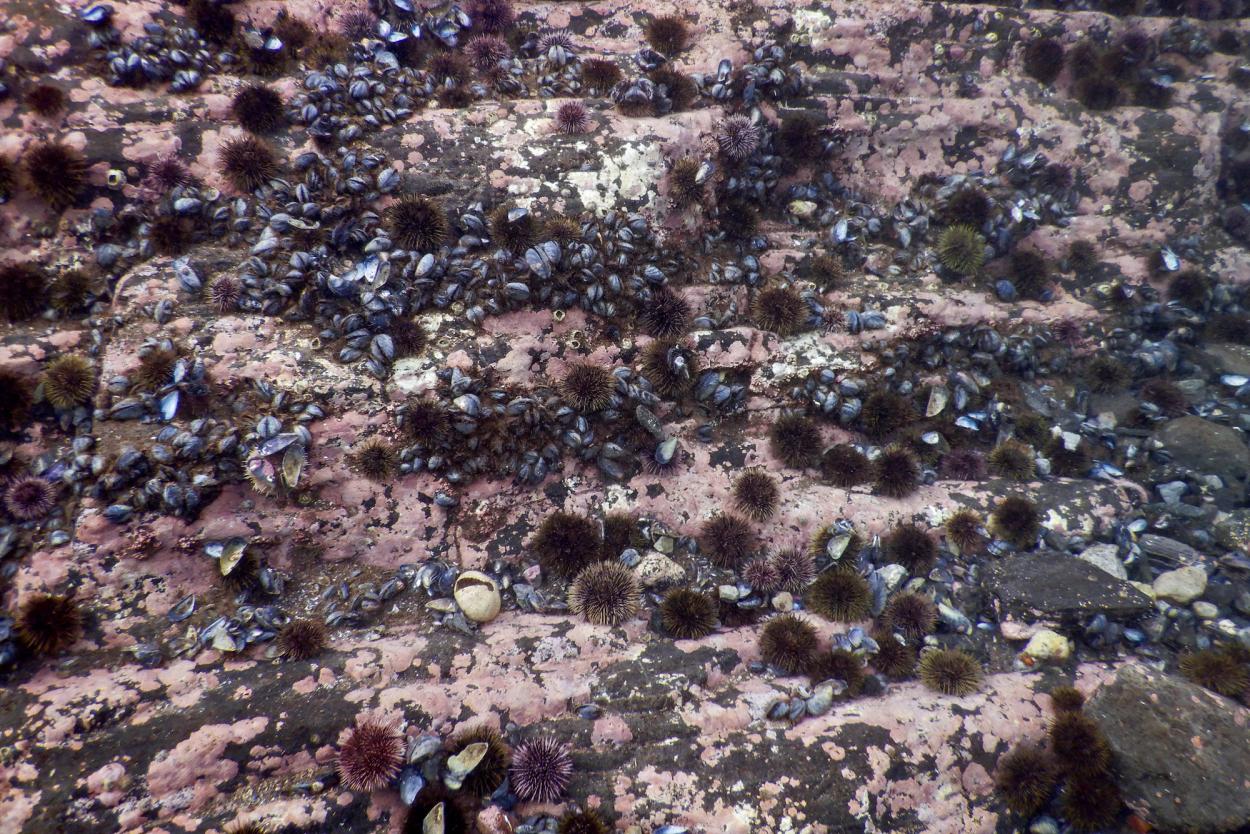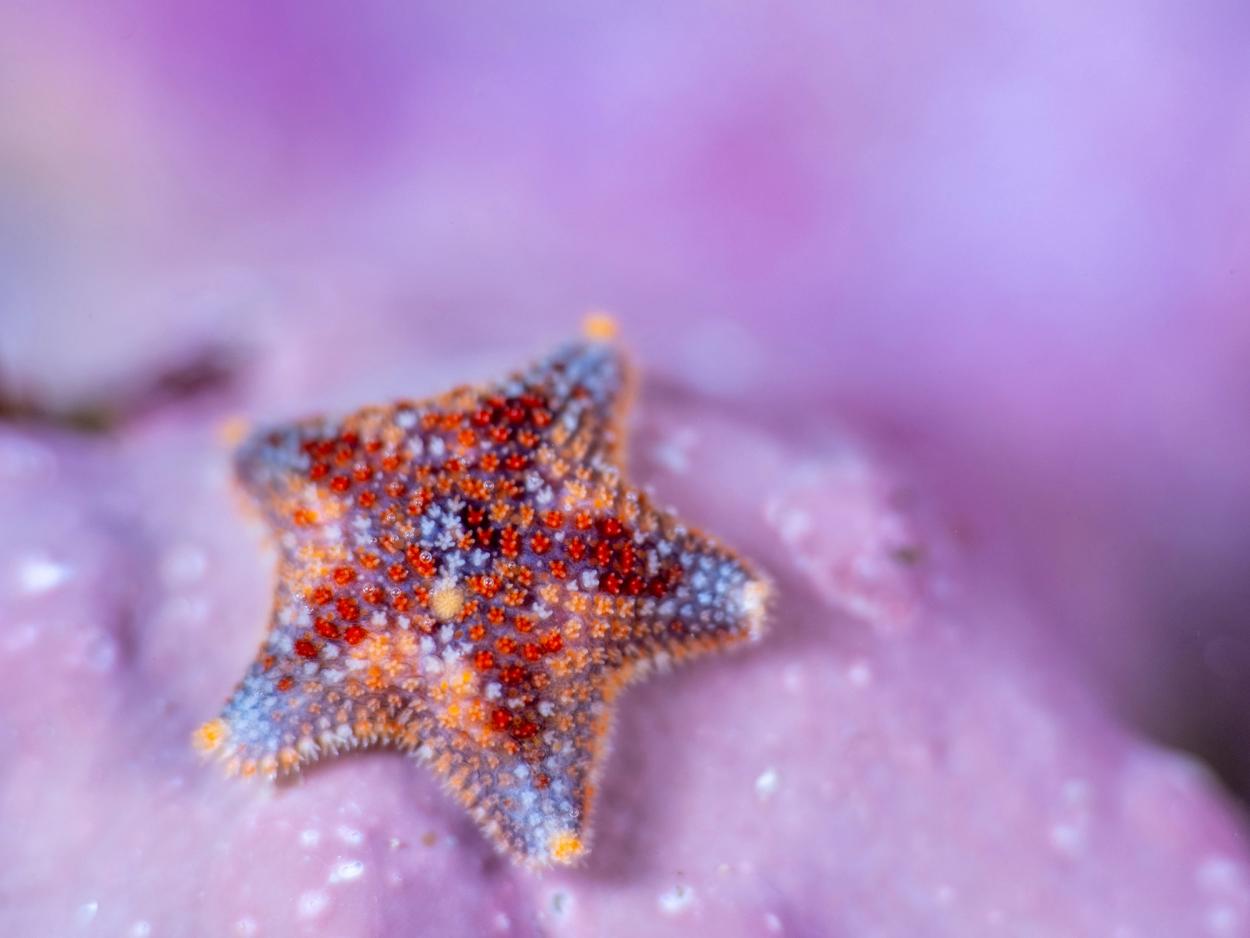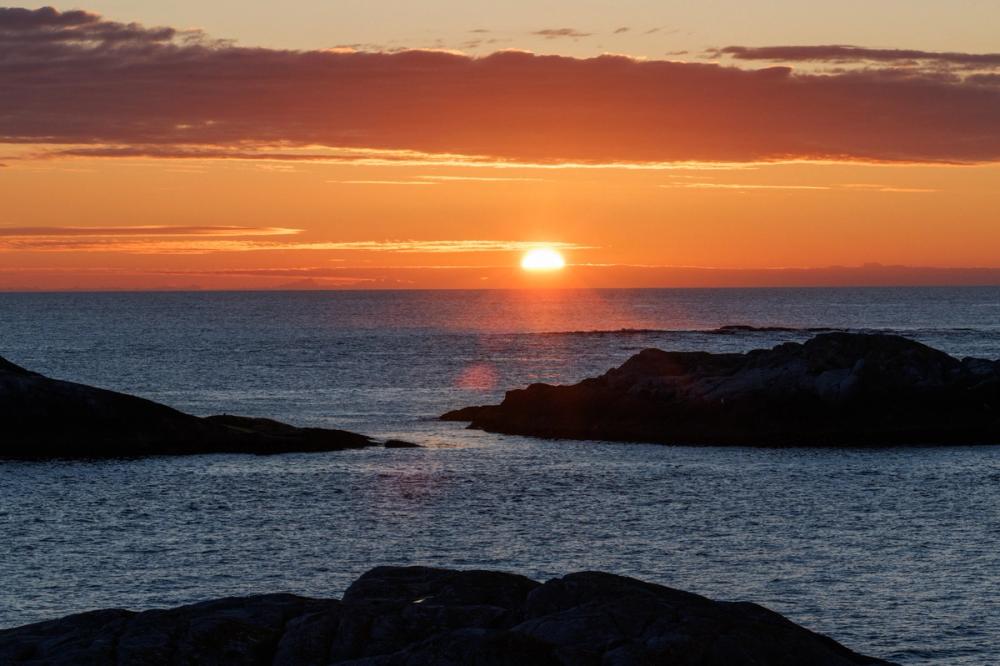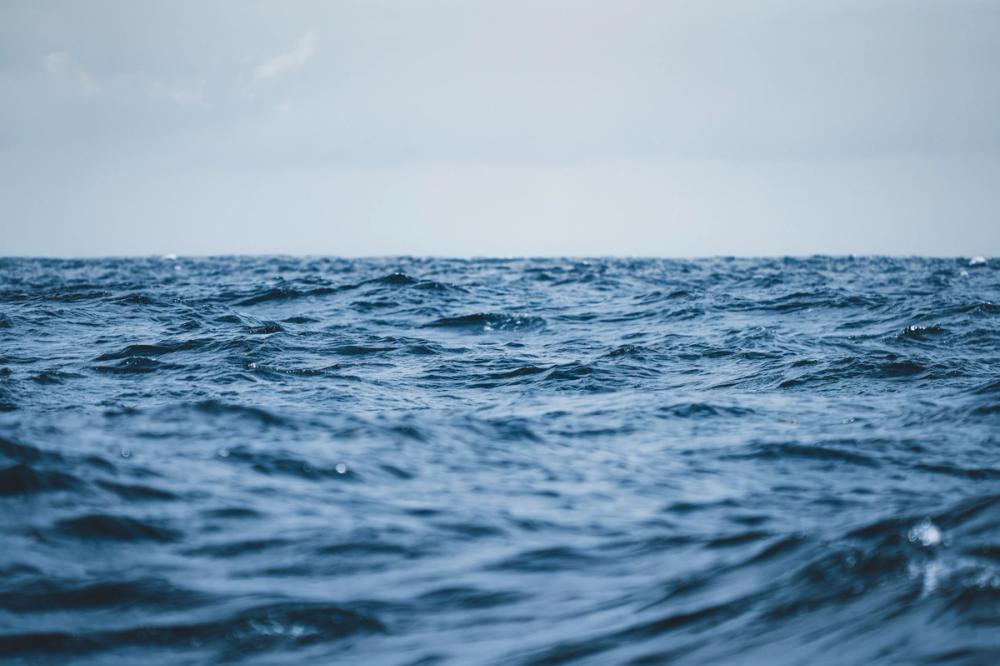Plagued by sea urchins
Tackling the biggest threat to underwater forests.
Denuded rock where kelp forest once flourished. More than 5000 square kilometres of Norwegian seabed have remained barren for decades due to urchin grazing. © Aleksander Nordahl
31 January 2025
Sea urchin outbreaks have decimated kelp forests globally creating vast areas of seabed devoid of life. Norway has lost half of its underwater forests to urchin grazing. In Tasmania 95% of kelp is gone. Where a rich and diverse ecosystem used to thrive urchin barrens persist, with far reaching consequences for ocean health.
Crunching through the snow I slip and slide down the steep track through the trees to the shore where the water bites at the icy drape of snow. My colleague Aleks beams at me, “Welcome to Arctic diving!” This will be my first freedive in northern Norway at a site where Tarevoktere (a voluntary organisation founded by Tromsø scientists) together with local dive clubs have been focusing efforts on restoring kelp forest ravaged by green sea urchins.
Wading out to waist-deep water I float and take in the view a few metres below me. Illuminated by fading winter light the sandy seabed is dotted with bare, rough looking boulders. Each bristles with hundreds of sea urchins, the felonious deforesters of Norway’s underwater forests I’d braved these chilly waters to see. Most are no bigger than a tangerine. They crowd together, spine to spine, stuck like lint on fabric to every surface of the rock. Though they don’t look fearsome, collectively this species has destroyed thousands of square kilometres of Norwegian kelp forest, creating barren seabed that has persisted for more than 40 years.
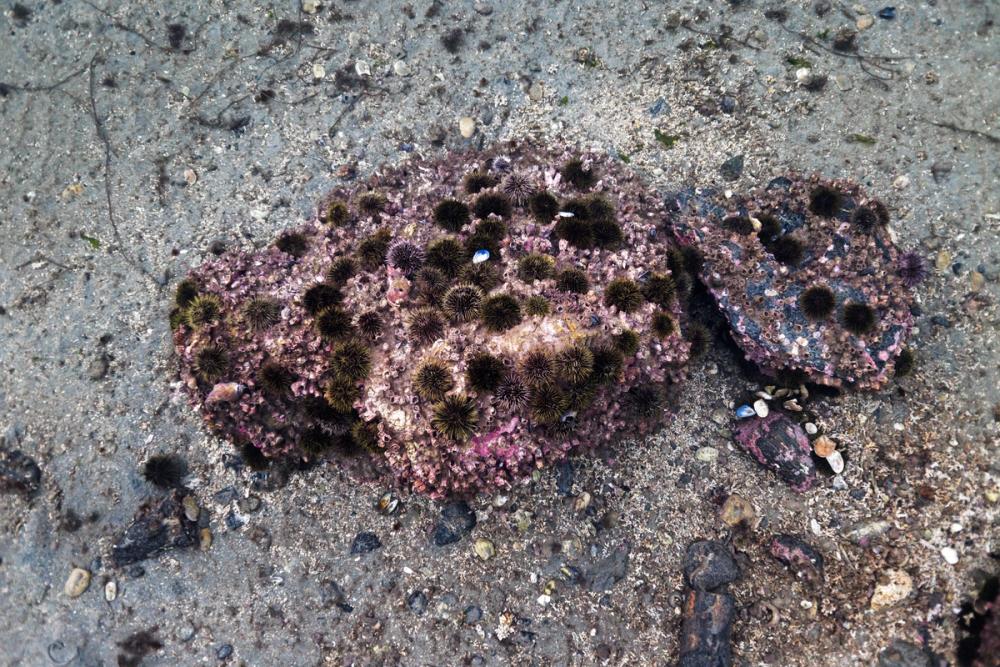
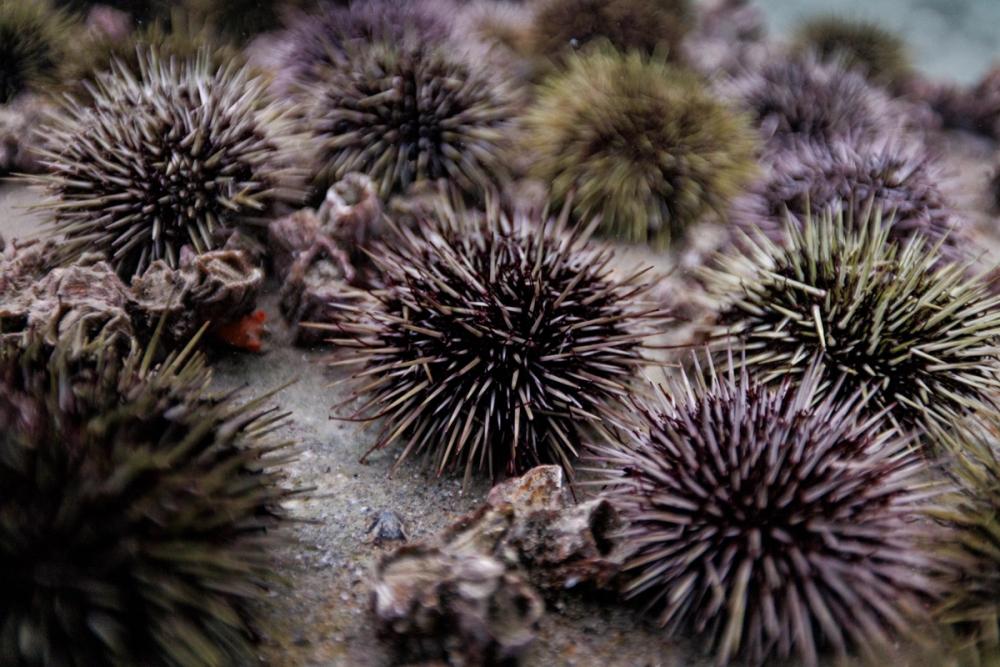
A crowd of green sea urchins sit on a boulder they have grazed bare of life. Only the empty shells of barnacles and hardy calcareous red seaweeds remain. © Aleksander Nordahl
Culling the urchins allows the seaweeds to grow back so the volunteer divers take hammers underwater to smash them one by one. This is kelp forest restoration wack-a-mole style. Part way through our dive, I find a hammer lying on the seabed most likely dropped on one of these missions. Gripping the handle I swing it gently, to get a measure of its weight and consider the urchins below. In that moment, no malice rises in me for these spiny grazers. All I see is a wonder of evolution doing what nature intended. I tuck the hammer into my weight belt and move along.
As we swim northwards parallel to the shore, Aleks points out the area where the divers have concentrated their efforts. Here the seaweed has grown back but I spot clusters of tiny urchins squeezed into kelp holdfasts and nestled in rock crevices nearby. It appears the urchins soon return, and en masse. With my salvaged hammer securely holstered I begin to wonder, how did it come to this? Wielding hammers at sea urchins where kelp forest used to flourish.
It seems this is another tragedy of our own making. Imbalances in the food chain caused by overfishing, climate change and pollution have allowed their numbers to proliferate wildly. The resulting conundrum of how best to tackle them is providing scientists, policy makers, conservationists and entrepreneurs with a unique opportunity for inspired innovation.
The extent of the problem
Seaweed ecosystems including kelp forests, bustle with life. They are highly productive, providing shelter, habitat and feeding areas for fish and a high diversity of invertebrates. One study of a single northern kelp holdfast, found 90 different animal species and 10,000 individuals living among its branches (Teagle et al., 2018).
Armies of green sea urchins (Strongylocentrotus droebachiensis) have caused large-scale deforestation of kelp forests all along the coast of central and northern Norway. The result is denuded seabed, sea urchin barrens spanning more than 5000 square kilometres that have persisted since the 1970s.
Similar mass destruction from urchin grazing events have been described in other parts of the world from both coasts of America, to Korea, Japan, Australia, Tasmania and New Zealand (Elner and Vadas, 1990, Estes et al., 2004, Steneck et al., 2004). Blooms of the green sea urchins and a handful of other species like it are cited as the biggest threat to kelp forests globally. In Tasmania where 95% of giant kelp forest has disappeared, the long spined sea urchin (Centrostephanus rodgersiias) is considered ‘the single largest immediate environmental threat to rocky reef communities in eastern Tasmania.’ (Johnson et al.,2011)
The role of kelp forests as carbon sinks, nutrient filters and a source of commercial species has huge economic value too. From theoretical calculations, restoring Norway’s kelp forests could produce 50,000 tonnes of wild fish per year, and generate €16.7 million per square kilometre in direct and indirect economic benefits every year. Even from a solely economic standpoint this is a huge incentive for underwater reforestation.
Why are urchins so destructive?
Described in disaster language as outbreaks, zombies, invasions, plagues, spiny enemies, prickly problems, their mass occurrence has the same effect as a pandemic disease. Sweeping through kelp forests and seaweed gardens in grazing fronts, they eat every fleshy thing in their path, leaving aquatic deserts in their wake that support little biodiversity or production. Knowledge of their biology and anatomy provides insight as to why they are so destructive.
Grouped together with starfish, brittle stars, sea cucumbers, sea lilies and feather stars in the phylum Echinodermata (meaning spiny skin), urchins have a rounded, rigid calcareous skeleton called a test that is covered in skin. Protruding through the skin are many moveable spines that are used for protection and in some species like stilts for walking. The simple layout of their anatomy means that instead of muscles to power locomotion they use a hydraulic system.
Five hydraulically powered teeth that never blunt, a sea of tiny, suckered tube feet to move them along and a battalion of spines for protection. Honed by 450 million years of evolution, sea urchins are designed to glide and graze across the seabed. © Erling Svensen
Running through their bodies is a series of tubes containing fluid under pressure. This ends at the outer surface in tube feet, hundreds of them, that can expand and contract by adjusting the pressure in the pipes. With their mouth positioned underneath this enables urchins to glide over and access surfaces at any angle whilst scraping and munching food from the rocks with a complex feeding apparatus called the Aristotle’s lantern. Made up of a series of plates and muscles with five blade-like, self-sharpening teeth (Wang et al., 1997) that are continuously growing, their jaws are able to power through soft tissue and in some species excavate holes in rock and steel pilings (Encyclopaedia Britannica, 2024).
Sweeping through kelp forests and seaweed gardens in grazing fronts, they eat every fleshy thing in their path
With few muscles to maintain, their energy requirements are low, allowing them to survive on little food for many years. No bulky muscles also means more room for gonads and a canny reproductive strategy that allows them to produce thousands of larvae from limited resources. By broadcasting eggs and sperm into the water, fertilisation and development into larvae take place remotely, meaning no energy is wasted on parental care. As juveniles, they hide in cryptic habitats, among pebbles and squeezed into rock crevices, ready to tip-toe out as soon as they reach adult size and are brave enough to venture into the open.
Within a balanced, healthy kelp forest ecosystem their numbers are naturally kept in check and they are not a problem but in large numbers they become an apocalyptic force, capable of clearfelling vast swathes of forest.
What causes urchin outbreaks?
Population explosions occur when numbers increase unchecked. In northern Norway historical overfishing of key urchin predators such as Atlantic cod, haddock and wolffish, is blamed for extensive and persistent urchin barrens (Steneck et al., 2004). Similarly in south west Alaska over hunting of sea otters for their fur pelts in the late 19th century allowed urchins to rein and ruin the underwater forests of the pacific northwest. Released from the controlling effect of their predators, urchins in both areas were able to proliferate wildly, triggering a trophic cascade and systematic collapse of the whole kelp forest ecosystem.
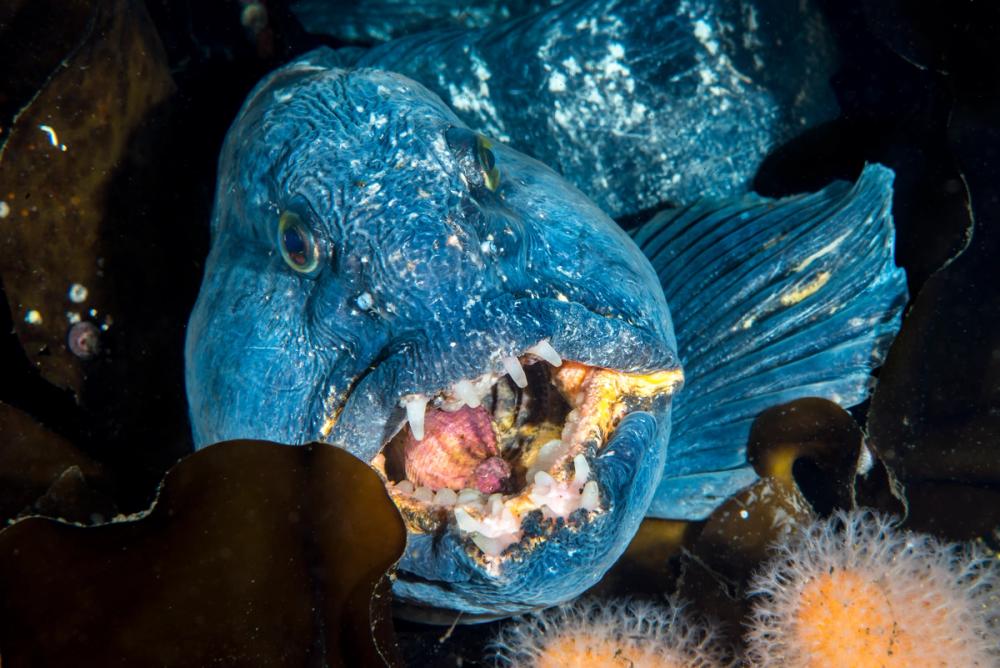
Burly predators of Norway's underwater reefs and forests, grey wolffish (Anarhichas lupus) are important for keeping sea urchin numbers in balance. With large heads and powerful jaws, they use teeth on the roof of their mouth to crush the hard shells of clams, whelks, crabs and sea urchins. © Erling Svensen
In Tasmania, the trigger was different but the effect has been the same. With climate change, warm waters of the East Australian Current (EAC) have been pushed south, carrying larvae of long spined sea urchins. By hitching a ride the urchins have extended their range to the east coast of Tasmania with devastating consequences (Byrne and Andrew, 2013). From first records in 1978, favourable conditions and overfishing of their natural predators (rock lobsters) have groomed the population to more than 20 million.
But urchin blooms are not always driven from the top down. During mid-September 2024 Reflections revisited a small embayment in the remote and dazzling Lofoten islands archipelago of northern Norway. Famous as a spawning ground for north Atlantic cod this area has been ecologically pristine for hundreds of years. But with the arrival of fish farms, pollution and rising sea temperatures in recent years, this is changing.
The purpose of our visit was to show Reflections's senior Scientist in Residence Hartvig Christie, a site we’d discovered the previous year where waste from a fish hatchery pipe discharges directly into the sea. Hartvig is a pioneering scientist who has shaped our understanding of kelp forest ecosystems. At the age of 76, he is still diving in the icy waters of Norway (fuelled by good food and Nordic liquors). Having spent his whole life dedicated to these underwater forests, he is compelled to continue his field research to support younger entrepreneurs in their restoration efforts.
Just weeks after a hip replacement surgery, he is back in the water without hesitation. Swimming across the bay, Hartvig points out signs of a habitat in poor health: filamentous algae, barren rock with urchins, a dirty haze in the water and shoals of juvenile saithe, a semi-pelagic fish characteristic of kelp forests—a foreboding of what lay ahead.
Arriving at the hatchery pipe we saw only red sea urchins (Echinus esculentus). From the surface to a depth of six metres they swathed the seabed in their thousands. Ranging from walnut to grapefruit in size, generations of urchins crowded bare rock where kelp might normally grow, amidst a slow rain of waste feed and fish faeces spewing from the pipe.
Hartvig is shocked. Preceded by language all the colours of the rainbow, “I’ve never seen this species in such high densities before.” In 50 years of Norwegian diving this is a first for him. “When we snorkel at other sites in Lofoten we see one or two here and there, maybe one per square metre” Hartvig says. Their role is to graze on the understory of animals and plants maintaining biodiversity as a natural part of a balanced system.
“This dive shows us that this species, like the green sea urchin, has the potential to become a significant grazer of underwater forests”.
- Hartvig Christie
When asked if there is any chance these blooms are natural Hartvig’s response is plain, “It’s quite obvious that they are feeding on the organic matter from the fish farm pipes. The red urchin is a common species so if food resources are good they stick together and in the breeding season produce lots of larvae that can settle”. With all this rich food available the urchins gorge and produce hefty gonads for prolific spawning and growth—a bloom driven from the “bottom up”.
Similar observations have been made of white urchins (Gracilechinus acutus) in Masfjorden, a region in western Norway with intensive Atlantic salmon farming. Here scientists found they were 10 times more abundant (38 urchins per square metre versus 4) close to the farms compared to areas a few kilometres away (White et al., 2018). Hartvig’s recent monitoring with Norway Institute for Water Research (NIVA) scientists has shown the white urchins to be spreading from several of the south-west Norwegian fjords and north towards Trondheimfjord and the Norwegian sea. Usually restricted to deeper water, it also now ventures up to the shallows lured by the nutrient banquet spilling from the fish farms. Spreading to nearby habitats it grazes seaweeds and most other organisms living on the seabed.
White urchins discovered in a fjord on the west coast of Norway by two spear fishers. ©Aleksandar Guylev
Redressing the balance: solutions, forest restoration and hope
In order for the kelp forests to recover the urchins must be removed. Methods other than death-by-hammer have been tested. In 2013 off the coast of northern Norway in Porsangerfjorden the rocky seabed was devoid of marine life but for thousands of green sea urchins. For a team of scientists from NIVA and the Institute of Marine Research (IMR) embarking on a radical field experiment this is how it had looked for the past 45 years. In an area the size of 100 football pitches (70 hectares), a relatively small but experimentally large area of seabed, this was about to change.
Aboard a chartered fishing vessel the scientists began a week-long regime of spraying 200 tonnes of quick lime into the sea to cull the urchins (Christie et al., 2024). Historically quicklime has been used to control starfish on shellfish farms, and is known to have an effect on echinoderms. Although considered to be a green chemical and harmless to other marine life, it was still frowned upon by some conservationists. But with Norwegian authorities requesting more methods to control sea urchin populations, it got the go ahead and the trial was set.
Within days of application the urchins began to perish and within a year a multispecies kelp forest had started to come back. Over the next 10 years the scientists monitored the area and found quicklime to be effective, with one caveat: the urchins must be prevented from returning (Strand and Christie, 2020). An unexpected twist to the quicklime study allowed them to test this hypothesis in real time. Coinciding with the monitoring phase was the proliferation of non-native red king crab (Paralithodes camtschaticus). Introduced to Russia in the 1960s to create a commercial fishery, it spread south and west to Norwegian waters. With its large powerful claws the king crab feasted on the urchins and was key to the ongoing success of the restoration in space and time. In recent years, increased commercial harvesting of the king crab is now harming the continued recovery of the kelp forest.
The biggest takeaway from the study was that removal of urchins through any means is only effective if urchin density is reduced below a critical level and remains low. Only then will the kelp forest be able to fully recover.
Another way of achieving this is by harvesting urchins for farming on land-based ranches. Urchin ranching? Cue images of cowboys on horseback, corralling herds of urchins grazing on open prairies. Not quite! Urchin ranching takes place beside the ocean at purpose-built facilities where the urchins are fed on a diet of juicy seaweeds to fatten up their roe (gonads). Sea urchin roe also known as ‘uni’ is one of the world's most exclusive seafood products. By collecting undernourished, invasive urchins and feeding them up, innovative thinking is turning a pressing ecological problem into a revolutionary business opportunity. It's a win-win. The main challenge is establishing cost-effective, scalable harvesting techniques that are able to keep pace with the spread of urchins. In Norway, one fisher has plans to set 4000 urchin traps per week to supply urchin ranches.
Sea urchin roe also known as ‘uni’ is one of the world's most exclusive seafood products.
The restoration toolbox: not just hammers
Wisdom suggests having a varied and full tool box when faced with a front of spiny kelp lumberjacks. Removal has proved to be the most effective short-term approach using methods that are efficient, economical and scalable in both space and time. Hammering and quicklime can work for small scale restoration, whilst harvesting by trapping and suction collection methods for land-based ranching suit large scale restoration.
Longer term solutions for kelp forest restoration address the original source of the problem by establishing Marine Protected Areas (MPAs) and reduced fishing quotas of urchin predators. This would allow the return of kelp forest ecosystems naturally. Enhanced by reintroduction of key species such as grey wolffish (Anarhichas lupus) through breeding programmes, this rewilding would nurture healthy and abundant kelp forest ecosystems where urchin numbers are in balance.
Emerging industries have shown there is economic bounty in the most effective restoration methods. Moving kelp forest restoration from academia to industry is key to upscaling efforts and ensuring long-term ecological recovery. Hope for the world’s kelp forests lies with the entrepreneurs and philanthropists forging ahead with new methods for harvesting the hordes of hungry urchins from underwater barrens.
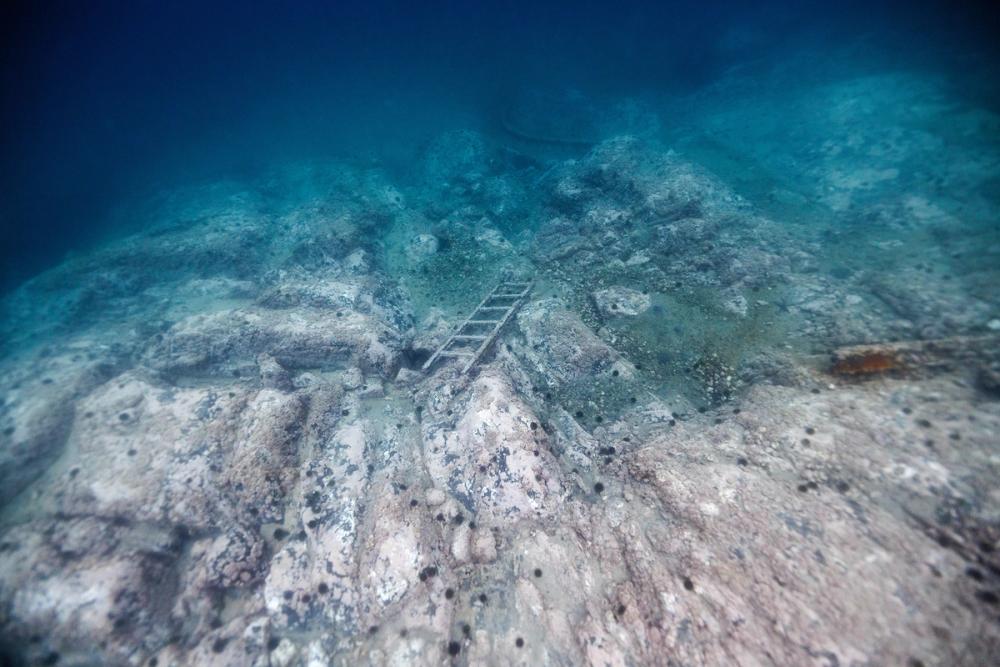
Denuded rock where kelp forest once flourished. More than 5000 square kilometres of Norwegian seabed have remained barren for decades due to urchin grazing. © Aleksander Nordahl
The good news is that even in places where urchin barrens have persisted for 40 years or more, the loss of kelp forest is reversible, Hartvig reassures. “In Norway our experiments have shown that if you remove the urchins the kelp comes back by itself”.
With a nudge in the right direction, nature heals itself.
Share this story
- Threats
- Ecosystems and habitats



